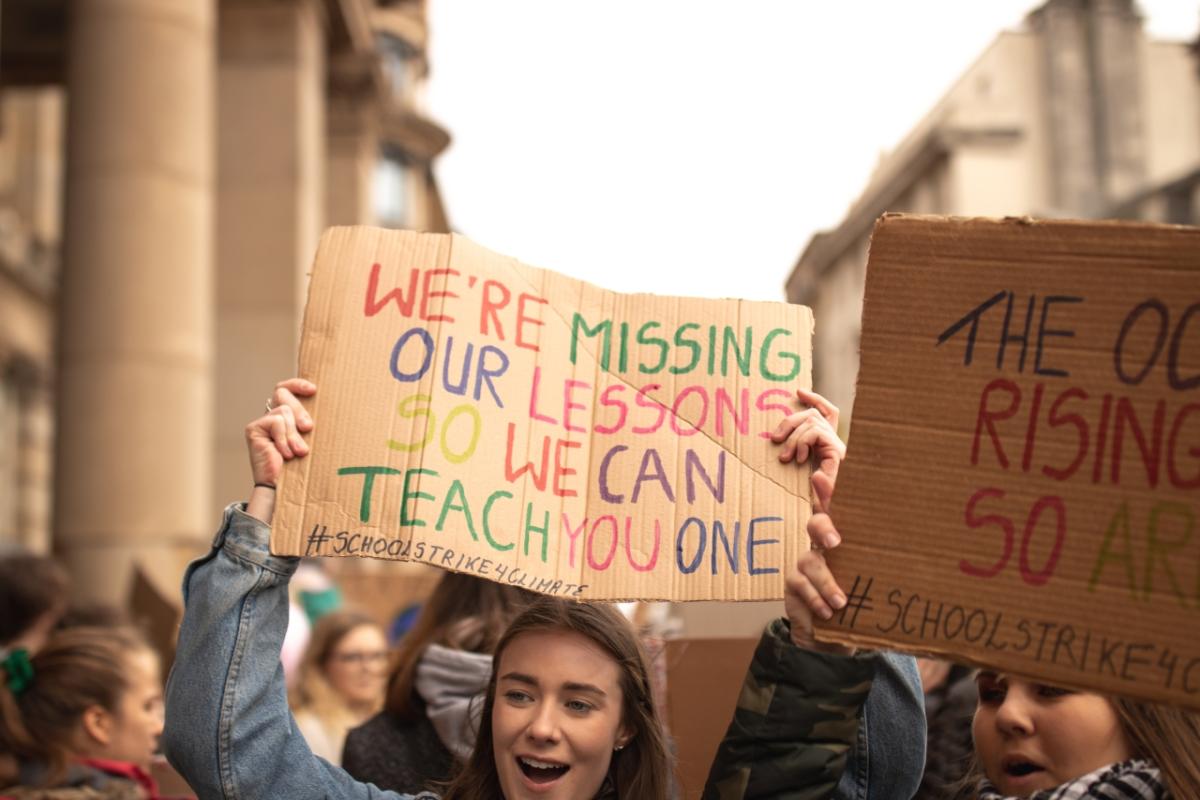5 Ways Companies Can Demonstrate Authentic Purpose to Gen Z
Advice from a Gen Zer on how companies can engage the "social justice generation"

By: Casey Sherman
If your company is authentically committed to purpose, Gen Z should know about it. Now a growing force of influence in the global market, Gen Zers account for 40% of global consumers and represent $150 billion in spending power. And Gen Z cares about purpose: 9 in 10 Gen Zers believe companies have more responsibility than ever to address environmental and social concerns. This generation needs to see that companies are genuinely committed to authenticity, transparency, and accountability. It is no longer enough to just stand for something beyond the bottom line. Companies must take action and make true change.
As a Gen Zer myself, I have developed a great deal of experience in social justice in a relatively short time. I have spent the past few years co-founding and running a youth civic education and engagement nonprofit, Empower the People, as well as doing my own issue-specific work. In my current role, I have the privilege of working with and learning from one of the world’s leading social purpose consultancies, and have seen the kind of change that is possible when companies follow a strong, authentic purpose. Now, I find myself more aware and appreciative of companies that are using their purpose to make a real impact. I also find myself more sensitive to and frustrated with companies that are not. And I’m not alone.
Even without a background in social purpose, Gen Zers know “purpose washing” when they see it – and believe me when I say they will not hesitate to call it out. Authentically committing to purpose is essential to connect with Gen Z. Companies need to prove that they mean what they say, and say what they mean.
These are my suggestions for 5 things companies can do to show Gen Z they are authentically committed to purpose:
1. Align Purpose With Products / Services
A company’s purpose has to connect to the work it does. Many companies fail in this regard, adopting causes that may be relevant to their consumers but don’t align with their business model. Companies that take on issues without a clear connection to the products or services they champion – though still taking important steps toward embedding and embodying purpose – don’t feel genuine. Instead, they feel like the product of a leadership that felt the pressure to choose a cause for the sake of staying relevant. The issues a company works on should be central to its mission and show me why it exists at all – beyond just to make a profit.
2. Highlight Impact Data
As I look through websites and ESG reports, countless companies boast about the great work they’re doing promoting DE&I, education, opportunity, and more. Some go even further to outline their strategy behind these initiatives, as well as how they’ve planned on rolling them out across the company and the communities they serve – which is great! But what I’ve found to be less common is accurate data that quantifies these programs’ impact – past, present, and future. Companies need to show Gen Z that they are following through on their word and making an impact. The bottom line is this: Data matters. A lot.
Chipotle is a good example of this. They have taken an innovative approach to data collection and distribution with Real Foodprint, a first-of-its-kind sustainability impact tracker for digital orders. Customers who use the app can access detailed impact data about the ingredients in their food, to see and understand their impact in real time. It also adds a new level of transparency and accountability for the company, allowing all stakeholders to help Chipotle elevate its impact on the planet.
3. Make Your Purpose User-Friendly
A company’s purpose needs to be highly visible in its communications. I should see who the company is and how it’s taking action from the moment I enter the homepage of its website. Show me mission and purpose statements, values, social impact programs, data, and ESG reports. If I can’t see those things, I assume a company doesn’t have them.
If you want Gen Z to care about your company, you have to show us what you’re doing to make change. Show me how you’re promoting DE&I in your corporate offices and communications, employee and consumer relations, and community programs. Show me what you’re doing to support ethical practices, sustainable development, and climate action in your factories, supply chains, and distribution networks. Create resources that are easy to find and understand. Prioritize authenticity, down to the very language you use on your site.
One company I admire is Clif Bar. From nearly the moment I enter their site, their purpose is clear. With just one click I found their aspirations and values, reading about who they are, what they stand for, and how they take action. The passion in their work comes through in the language they use and the transparency in their efforts. They have created visually appealing summaries of their impact by the numbers, benchmarks, and success with meeting them. Links within each section also allow readers to easily learn more about areas of greatest interest.
4. Be Clear, Concise, And Comprehensive
ESG reports are LONG. Like, really long. And while it’s important to be thorough, Gen Z and “average joe” stakeholders often get lost in the length. Companies that want to be truly effective in their communication and engagement with Gen Z and other consumers who just don’t have time to sift through a 100+ page report should create clear, concise, and comprehensive summaries that get right to the good stuff. An interactive page on the website, a fun graphic, video, or even interactive PDF – anything to make sure Gen Z can see and understand the purposeful work a company does.
Take Nike for example. Not only is their purpose directly stated on the front page of their corporate website, but it is also followed by a clear distinction of their focus and impact areas. They provide a number of different resources to help understand their community and social impact and company goals. This includes a video and letter from President and CEO, John Donahoe, as he reviews their 2020 impact and introduces their Purpose 2025 Targets – clearly, concisely, and comprehensively.
5. Communicate Frequently and Transparently
If a company is truly being authentic in its purpose work, I should hear about it. Often. Tweet updates, send out newsletters, post videos, anecdotes, and data on the website or social media – literally anything to show me how a company is actively working to make change.
Communicating frequently and transparently can show Gen Zers that a company’s “purpose” is not a performative statement, but a genuine commitment to doing better. Talk about the organization’s progress toward its goals. What is it doing well? Where is it falling short? How will it improve its strategies moving forward? Companies that share in this way show consumers like me that impactful change is their first priority. It shows me that they truly care about and believe in their work, and exude authenticity in everything they do. And that makes me care about and believe in their purpose, too.
Look at Ben & Jerry’s. As a company, they are particularly vocal on social media, especially Twitter. Just a quick scroll through their Twitter page is enough to see the range of conversations the company addresses. Mixed in with posts showcasing their classically delicious flavors and products are tweets about the company’s issue-specific work, educational threads, and their social and political advocacy. They were also quite active on Gen Z-oriented platforms following the deaths of George Floyd and Breonna Taylor, making sure their voice did not go unheard.
Over the course of the past two years, we’ve seen the reinvigoration of the Black Lives Matter movement, the trauma of an ongoing global pandemic, and rallying cries around issues of inequity and injustice that grow in volume with each passing day. Climate change has literally left our world on fire and underwater. Things can’t continue this way.
I have been told time and time again that Gen Z is going to be the generation to fix our world. That the adults failed, and they need us to step in. And while that may seem exciting, encouraging, or empowering – it’s actually quite exhausting. And incredibly frustrating. But I’m glad you all believe in us!
No matter how hard we try, we can’t do it alone. We need your help – the world needs your help. Gen Z cares what companies do because we know the power that business has to be a catalyst for change. We’ve seen it.
So why not use that power to build something better?
Casey Sherman is a Junior at Duke University studying Public Policy and works as a Research Associate for Carol Cone ON PURPOSE. Casey was the Lead Student Coordinator for the March for Our Lives – Parkland event in March 2018. She has also served as the Co-Founder and Co-President of her nonprofit, Empower the People, since 2018.

